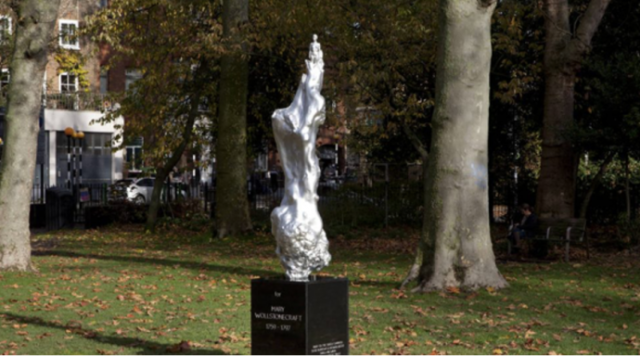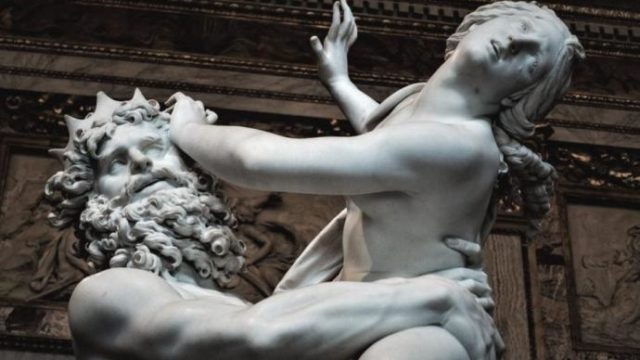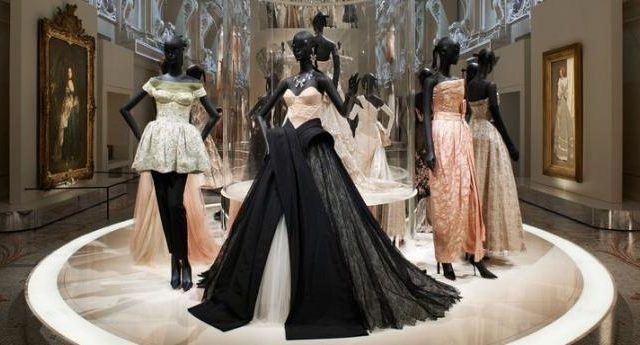iPaulina

What is the point of statues?
The purpose of statues in society, and how to deal with those we don’t agree withLast week, a statue of the English writer, feminist and philosopher in the 18th Century, Mary Wollstonecraft, was unveiled in Islington, sparking great debate. Best known for her work A Vindication of the Rights of Women published in 1792, Wollstonecraft argued that women and men should both be treated equally as rational beings; some even call her “the mother of feminism”. In some ways, the creation of the statue was a triumph: today in London, more than 90% of statues are currently of men, leaving many incredible and hugely influential women uncelebrated and ignored. The new statue of Wollstonecraft has brought her crucial work in advocating women’s rights to the foreground.
However, when one sees the statue, a work by Maggi Hambling, one may question how appropriate it is, and how Wollstonecraft herself would have felt about it. The actual figure of Wollstonecraft appears tiny and shows her naked body emerging from a swirling mass of female forms. This new concept rejects the traditional form of a public sculpture that one might see of the many men who, with Millicent Fawcett, all clothed, guard Parliament Square. The Telegraph described it as “a flimsy, Barbie-like embarrassment”; just Google it and you will understand the outrage it has received in the press. Some say that the statue was never meant to be an outright depiction of Wollstonecraft, but a piece of abstract art influenced by her achievements. Hambling said that it was meant to “encourage a visual conversation with the obstacles Wollstonecraft overcame” representing her as free from societal and gender restrictions. In my opinion, this has gone too far. The nakedness of the statue, instead of liberating her, strips her of her dignity and identity, making this the crowning feature of the statue instead of prompting us to recognise Wollstonecraft in her own right and remember her successes. But that is just my opinion.
More fundamentally, what is the point of statues, and what should be done about those that not everyone agrees with? Edward Colston, a wealthy merchant who made his money largely through slavery, was memorialised through a statue near Bristol harbour. On his death in 1721, he bequeathed his wealth to charities and his philanthropic legacy is still in evidence in the city. But his statue offended and angered many residents, who thought it insulting and inappropriate to glorify and memorialise a man who had made his money in such heinous ways. In June this year, following the death of George Floyd in America, Black Lives Matter demonstrators in Bristol decided that Colston’s statue should be removed, tearing it down and throwing it into the harbour.
Similarly, after the collapse of communism in Russia in 1991, great statues of leaders, most notably Stalin and Lenin, were symbolically torn down. However, this did not remove tensions within the communities, where many people still thought that Lenin and Stalin had played a positive role in Russian history.
Elsewhere, controversial statues have been preserved. In India, following the gaining of independence in August 1947, there were many statues which no longer seemed to be relevant for the future of a new country free from the British Empire. Some of these were removed, and some were sold back to Britain. But many were taken to a small area of derelict land in Northern Delhi and abandoned, out of sight and out of mind.
Although the purpose of statues appears to be to commemorate the individual, we learn less about the figure than about the society which installed them. In this respect, statues should not be venerated and ultimately the communities who live with them should decide whether they should remain. This open acceptance of changing viewpoints on statues was seen in the Roman Empire: the Romans purposefully made statues with detachable heads, so that they could replace one head with another easily, depending on which person was admired and popular at the time.
Statues become flashpoints at times of social change: they honour the values and reflect the hierarchies of the times in which they were created. Some, like President Macron, says that “by taking down statues we erase history from our past”: statues provide us with a record of our past, and the desire to respect and understand that history of commemoration argues against dismantling them. However, what some in one era celebrate, others may later reject: society is constantly evolving and so taking down statues should not be seen as offensive. Instead, the debate surrounding a statue encourages people to learn about their relevance and the debate itself becomes part of history.
In the case of the statue of Mary Wollstonecraft, even though the statue may be offensive to some, as we are not part of the community who commissioned it, perhaps it is not our place to judge. In the future, if people have a change of heart, then they should not feel obliged to keep it. Over time opinions change and statues should be allowed to as well. We can only imagine how long the statue of Mary Wollstonecraft will stand.
Amelia VI







